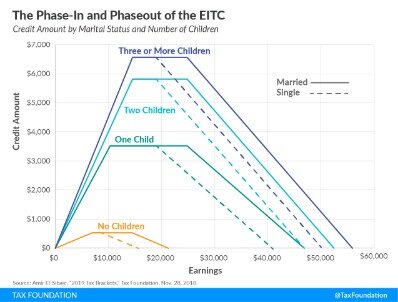Contents:


Under GAAP, name the four things that are needed to calculate depreciation on an asset. Does the Accumulated Depreciation account normally require an adjusting entry? Define depreciation and explain the purpose of the journal entries. Prop houses and studios could amortize this cost by leasing the equipment out to other productions. The carrier will also seek to amortize shares held by its treasury equal to about 2.4% of its total share capital. These articles and related content is the property of The Sage Group plc or its contractors or its licensors (“Sage”).
Accountants use amortization to spread out the costs of an asset over the useful lifetime of that asset. Negative amortization may happen when the payments of a loan are lower than the accumulated interest, causing the borrower to owe more money instead of less. An example of the first meaning is a mortgage on a home, which may be repaid in monthly installments that include interest and a gradual reduction of the principal obligation. Such systematic annual reduction increases the safety factor for the lender by imposing a small annual burden rather than a single, large, final obligation.
Join PRO or PRO Plus and Get Lifetime Access to Our Premium Materials
For instance, a business gains for years from using a long-term asset, thus, it deducts the amount gradually over the asset’s useful life. Amortization refers to the process of repaying a loan in full by the maturity date by making monthly payments of the principal and interest over time. Early in the loan’s life, a more significant portion of the flat monthly payment goes toward interest, but with each subsequent payment, a larger part of it goes toward the loan’s principal. Regardless of whether you are referring to the amortization of a loan or of an intangible asset, it refers to the periodic lowering of the book value over a set period of time. Having a great accountant or loan officer with a solid understanding of the specific needs of the company or individual he or she works for makes the process of amortization a simple one. Fixed/tangible assets are purchased and used, they decrease in value over time.

These two are often identical terms and are commonly used interchangeably, but different accounting standards govern them. Since a patent is only valid for a limited number of years, a business is required to amortize it. Every year, the amortization amount is subtracted from the value of the copyright and is listed as an expense.
Amortization vs. Depreciation
Calculating the monthly payment due throughout the loan’s life is how a loan is amortized. The next step is to create an amortization plan that specifies exactly what portion of each monthly payment goes toward the principal and what goes toward interest. The monthly interest will decrease since a portion of the payment will presumably be used to reduce the remaining principal debt. In addition, since your payment should ideally remain constant each month, more of it will go toward the principal each month, thereby reducing the amount you borrowed. Amortizing intangible assets is crucial because it may lower a company’s taxable income and, thus, its tax bill while providing investors with a clearer picture of the business’s actual profitability.
- Although the amortization of loans is important for business owners, particularly if you’re dealing with debt, we’re going to focus on the amortization of assets for the remainder of this article.
- Any damage to these ultimately affects the value of those properties, causing depreciation.
- But, the important point is amortization expenses must be carried out to gain clarity over expenses.
- And, you record the portions of the cost as amortization expenses in your books.
- For each year, you can subtract a part of the intangible asset cost.
As a consequence of adding interest, the total loan amount becomes larger than what it was originally. The difference between amortization and depreciation is that depreciation is used on tangible assets. Tangible assets are physical items that can be seen and touched. For example, vehicles, buildings, and equipment are tangible assets that you can depreciate. The amortization of a loan is the process to pay back, in full, over time the outstanding balance. In most cases, when a loan is given, a series of fixed payments is established at the outset, and the individual who receives the loan is responsible for meeting each of the payments.
amortization
Instead of amortization, indefinite-life assets are evaluated for impairment yearly. These items are amortized on a straight-line basis over their economic or legal life, whichever is shorter. The calculation will incorporate the number of payment periods , the principal , the amortization payment and the interest rate .
IRS updates procedures on new Section 174 R&E compliance – Grant Thornton
IRS updates procedures on new Section 174 R&E compliance.
Posted: Tue, 20 Dec 2022 08:00:00 GMT [source]
Taxable income is reduced when amortization is dedicated; hence your end-of-the-year bill lowers. For each year, you can subtract a part of the intangible asset cost. In other words, it means to expense the intangible asset’s cost over its estimated lifetime.
This way, you know your public accounting balance for the types of loans you have. Using an amortization table can be a helpful way to understand how all your payments get applied. Goodwill is the market credibility of a company and, thus, is intangible. Software is considered a fixed physical asset for several companies; it is depreciated instead of amortized. The objective of depreciation is to prorate the cost of the asset over its useful life. On the other hand, amortization aims to capitalize on the cost of the asset over its useful life.
Free Accounting Courses
Intangible assets can be patents, copyrights, intellectual property, etc. Depreciation is levied on tangible assets, whereas amortization applies to intangible assets. In short, it describes the mechanism by which you will pay off the principal and interest of a loan, in full, by bundling them into a single monthly payment. This is accomplished with an amortization schedule, which itemizes the starting balance of a loan and reduces it via installment payments. Amortization refers to the paying off of debt over time in regular installments of interest and principal to repay the loan in full by maturity.
You may need a small business accountant or legal professional to help you. Principal and interest into periodic payments to where the loan is paid off at a specified time. Amortization is used for mortgages, car loans, and other personal loans where individuals normally have a basic monthly payment for a certain amount of years.
- When a company acquires assets, those assets usually come at a cost.
- Amortization may refer the liquidation of an interest-bearing debt through a series of periodic payments over a certain period.
- This schedule is quite useful for properly recording the interest and principal components of a loan payment.
- This is the total payment amount less the amount of interest expense for this period.
- All this can be helpful for things like tax deductions for interest payments.
An amortization table provides you with the principal and interest of each payment. Amortization is a term people commonly use in finance and accounting. However, the term has several different meanings depending on the context of its use. Investors and managers pay attention to the above part specifically to understand the company’s financial position and liabilities. It’s structured so that you will pay the interest portion during the early duration and the principal part later.
Is determined by dividing the asset’s initial cost by its useful life, or the amount of time it is reasonable to consider the asset useful before needing to be replaced. So, if the forklift’s useful life is deemed to be ten years, it would depreciate $3,000 in value every year. Capitalized interest is the cost of borrowing to acquire or construct a long-term asset, which is added to the cost basis of the asset on the balance sheet. Written-down value is the value of an asset after accounting for depreciation or amortization. In the first month, $75 of the $664.03 monthly payment goes to interest.
The useful life, for book amortization purposes, is the asset’s economic life or its contractual/legal life , whichever is shorter. We record the amortization of intangible assets in the financial statements of a company as an expense. The book value of an intangible asset or a loan repayment is determined using the amortization method. Amortization costs denote the value logged in books throughout the loan’s tenure or an asset’s lifetime. There are a wide range of accounting formulas and concepts that you’ll need to get to grips with as a small business owner, one of which is amortization.
Amortized Cost Method
Though you usually calculate the payment amount before calculating interest and principal, payment is equal to the sum of principal and interest. As an example, if a company buys a ream of paper, it writes off the cost in the year of purchase and generally uses all the paper within the same year. For larger assets, the company could be reaping the rewards of the expense for years, so it writes off the expense incrementally over the useful life of the tangible asset. Amortization is important for managing intangible items and loan principals. You can also use the formulas we included to help with accurate calculations.

This would make the amortization rate of the bond’s premium equal to $1,000 per year. With NetSuite, you go live in a predictable timeframe — smart, stepped implementations begin with sales and span the entire customer lifecycle, so there’s continuity from sales to services to support. So, for example, the brand value of a company logo or mascot may be amortized, while the resale price of their manufacturing machines may depreciate. Amortization, in general, is writing off a part of its value every year. You can now use Wafeq as an innovative accounting solution to run your business in an efficient way from one place. Most accounting and spreadsheet programs provide tools for automatically calculating amortization.
These articles and related content is not a substitute for the guidance of a lawyer , tax, or compliance professional. When in doubt, please consult your lawyer tax, or compliance professional for counsel. This article and related content is provided on an” as is” basis. Sage makes no representations or warranties of any kind, express or implied, about the completeness or accuracy of this article and related content. Sage 300cloud Streamline accounting, inventory, operations and distribution.
The business will record an amortization expense to reflect the decrease in the asset’s value. Company X would recognize an intangible asset valued at $17,000 and amortize that cost over 17 years. As a result of this calculation, amortization schedules charge interest over time as a percentage of the principal borrowed. This is because amortization schedules must take into account the time value of money.

We use amortization tables to represent the composition of periodic payments between interest charges and principal repayments. We amortize a loan when we use a part of each payment to pay interest. Subsequently, we use the remaining part to reduce the outstanding principal.
Depreciation is used to spread the cost of long-term assets out over their lifespans. Like amortization, you can write off an expense over a longer time period to reduce your taxable income. However, there is a key difference in amortization vs. depreciation. For intangible assets, knowing the exact starting cost isn’t always easy.
Madras HC denies depreciation on toll road or toll bridge but allows … – ey.com
Madras HC denies depreciation on toll road or toll bridge but allows ….
Posted: Mon, 06 Mar 2023 08:00:00 GMT [source]
Explain how to calculate and record depreciation expense under the straight-line method. Explain how to calculate and record depreciation expense under the units-of-activity method. Amortization is when a business spreads payment over multiple periods of time.


